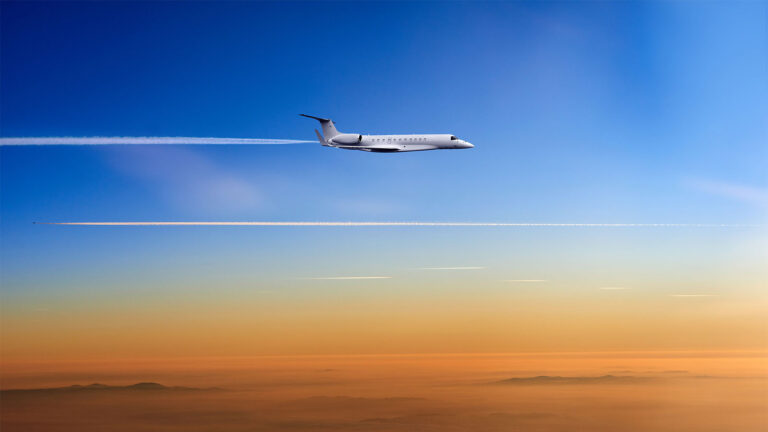Stay Up to Date
Submit your email address to receive the latest industry and Aerospace America news.

2024 Sperry Award Winner Honored for Contributions in the Field of Aerodynamic Design
Lawrence Sperry Award
Each year, AIAA presents the Lawrence Sperry Award to recognize a notable contribution made by a young professional, age 35 or under, to the advancement of aeronautics or astronautics. AIAA Senior Member Michelle Banchy has been honored “for exceptional technical contributions in the field of aerodynamic design toward the development and application of natural laminar flow systems.” Banchy stated that she was honored to be the 2024 recipient, noting, “it is truly humbling to be listed alongside the many distinguished previous Sperry Award recipients. It fills me with such gratitude for the endless support of my family and friends, for my mentors and coworkers who have patiently taught me so much, and for the amazing projects I’ve had the privilege of working on at NASA Langley Research Center.”
As noted in her award nomination, Banchy, a Research Aerospace Engineer in the Configuration Aerodynamics Branch, has led a wide range of natural laminar flow wing design efforts. This work includes computational studies, a wind tunnel test, and a flight test campaign, which demonstrates the versatility of her skills and leadership ability, and she is recognized as an international subject matter expert. Natural laminar flow is a technology that has been studied within the aerospace community for decades due to its known performance benefits. It has long been desired to implement laminar flow on the wings of transport vehicles. However, laminar flow has historically been limited on wings because of the introduction of crossflow boundary layer instabilities on surfaces with sweep. In recent years, laminar flow wings have once again become the focus of many research projects worldwide. The research led by Banchy and her colleague, Richard Campbell, aims to address this historic challenge and finally enable large extents of natural laminar flow on the wings of transport vehicles. They have codeveloped the Crossflow Attenuated Natural Laminar Flow (CATNLF) design method, and this innovative technology shapes the wing airfoils to produce specific pressure distributions found to reduce the crossflow boundary layer instabilities that typically lead to premature transition. For the transonic transports studied by Banchy, the CATNLF design method is predicted to reduce the fuel burn of the vehicle by 5-10%. The promising computational results inspired a wind tunnel test to be conducted, for which Banchy served as the principal investigator (PI). She designed the wind tunnel model, referred to as the Common Research Model with Natural Laminar Flow (CRM-NLF), and led the wind tunnel test and data analysis. The CRM-NLF, utilizing the CATNLF method, showed extents of laminar flow that doubled extents seen in any previously-published wind tunnel or flight test on configurations with comparable wing sweep. The wind tunnel test was awarded a NASA Group Achievement Award in 2019, where Banchy was recognized as team lead.
The CRM-NLF has been the subject of numerous studies and technical papers from researchers around the world, significantly contributing to both the understanding of laminar flow technology and the advancement of computational tools used to predict boundary layer transition. The positive results from the wind tunnel test led to a NASA flight test campaign to further advance the CATNLF technology. Banchy serves as the principal investigator for the CATNLF flight test series, for which she leads a multidisciplinary team across NASA Langley Research Center and Armstrong Flight Research Center. She designed the test article, developed the research objectives and manufacturing requirements, and provided decisions for flight plans, as well as handling logistics and organizing tasks leading up to the flight tests.
In addition to laminar flow technology, Banchy has also distinguished herself as an internationally-recognized subject matter expert in aerodynamic design. Her skills are regularly sought after to aid in the design of new configurations, such as the Swept Wing Flow Test (SWiFT) wind tunnel model for the international NATO STO AVT-298 research program. She also supported an international collaborative research agreement between NASA and JAXA related to the design and analysis of supersonic commercial transports with natural laminar flow.
A Love for Aerospace and Encouragement to Dream Big
For as long as Banchy can remember, she’s loved space, airplanes, and anything that flies. She was one of the many kids who, when asked what they wanted to be when they grew up, enthusiastically answered “astronaut!” or “pilot!” She also has always loved problem-solving and puzzles, and when she was older, she realized there was a career that blended her interests. “While I didn’t know what Aerospace Engineering was as a child, I do remember always being encouraged by my family to dream big and work hard to accomplish even the most ambitious goals. I think the confidence they had in my abilities, along with the freedom they allowed me to pursue my interests, planted the seeds that ultimately led me to where I am today.”
Banchy moved from California to Texas during high school and ended up deciding to stay in Texas for college for financial reasons. She attended the University of Texas at Arlington, actually starting out as a Business major. She quickly realized that it wasn’t a good fit for her based off the coursework. She noted, “I enjoyed my math and science classes most, which motivated me to find a new major that aligned better with those interests. While browsing the university website, I found Aerospace Engineering and selected it based off my childhood interests in space and airplanes. Truthfully, I didn’t have a very thorough understanding of what engineering was when I selected it, aside from the basics that it involved math and science.” While her choice was maybe less intentional than the average engineering student, Banchy quickly found that it was a great fit. One of her favorite things about engineering, she commented, “is that it seamlessly blends both analytical and creative thinking to tackle a problem. As an engineer, you apply logic and analyze data to understand your task, but ultimately your solution will depend on your creativity and innovative ideas. I love how multidimensional engineering is and I am so grateful that I ended up in this career.”
During her undergraduate studies, she prioritized sampling as many things as possible to help develop her interests. She worked with professors through the university’s Honors College, took coursework outside her major – when she graduated she also had minors in Nuclear Engineering, Mathematics, and Mechanical Engineering – and applied for every internship she could find. “These experiences really helped me identify not only what I liked, but also what I didn’t like, which I found just as valuable. Aerospace Engineering is such a broad field, and I used my time in college to explore as much of it as possible to help narrow down my interests. If it weren’t for the extracurricular activities I pursued in undergrad, I really don’t think I’d be where I am today.” Banchy was selected for the NASA Aeronautics Scholarship Program just before her junior year, providing her not only with financial assistance, but also the opportunity to intern at a NASA center. She interned at NASA Langley Research Center in 2012, and the positive experience encouraged her to pursue additional internships. After receiving her Honors B.S. in 2013, she moved to the University of Michigan to complete her master’s studies in Aerospace Engineering with a concentration in Gas Dynamics. While there, NASA hired her through the NASA Pathways Program that led to full-time employment.
Mentorship and Teamwork Shaped Her Career
When considering her work experiences, Banchy noted, “one of the most influential work experiences that have shaped where I am today is the mentorship and teamwork that I’ve been fortunate to have at NASA. Not only do I get the opportunity to learn from my own projects, but I’ve been able to learn from other people’s experience as well. We’re able to build off years of knowledge as a team, making rapid progress more viable than if we worked independently.” She added, “one of my favorite things about working for NASA is the collaborative spirit, where the researchers are not only willing to share their knowledge with an early career individual, but they’re actually eager to do so. I think the emphasis on teamwork and collaboration that I’ve experienced at NASA has been a huge factor in any successes I’ve had in my career thus far.”
Banchy remarked that research “will always take you in new directions from where you start, and will, more often than not, deviate from your planned path. Many of the things I try don’t work, and that’s one of the most exciting things about research! The challenge of interpreting results, and letting the data drive your direction keeps things interesting.” This has provided her with opportunities to continue learning new skills. As her research on laminar flow design developed, the team found it necessary to experimentally confirm the computational predictions. This transitioned the research from the computer to a physical model in the wind tunnel, and it pushed Banchy to learn new skills on how to effectively plan and execute an experimental test. “We’re now pushing the research again with our progression from the wind tunnel into flight testing, and I can’t wait for all the new things I’m going to learn! I’ve been so fortunate to continue expanding my knowledge through my projects and learning from all the incredibly skilled individuals around me.”
Design Challenges That Will Influence Next-Generation Transport Configurations
As the aerospace industry pursues a sustainable and high-tech future, it is exciting to anticipate the promise of novel configurations in the coming years. As an aerodynamicist, Banchy looks forward to the design challenges associated with these new configurations. “I’m hoping to contribute to the understanding of the complex aerodynamics associated with next-generation transport configurations, like the juncture flow of a truss-braced wing or the propulsion-airframe integration effects of new engines.” She is also excited to see promising work in different flight regimes, like the effort toward practical supersonic commercial travel and even flight on other planets. “While I can’t predict the future and what aerodynamic challenges will emerge, I’m eager to learn as much as possible along the way so hopefully I can contribute to the industry’s knowledge of how to design efficient vehicles.”
Drawing Inspiration from Other Aerospace Professionals
Banchy explained that she’s been fortunate enough to have many aerospace professionals who have inspired and mentored her over the years. “The most notable mentor in my career has been Richard “Dick” Campbell (AIAA Associate Fellow), who has been at NASA Langley Research Center for 50 years now!” Campbell is a world-renowned expert on aerodynamic design, as well as a genuine friend to everyone he works with. “Dick has eagerly shared his knowledge with me, created an environment where I am comfortable failing and asking questions, and has always advocated for me with others. I can say without a doubt that I would not be where I am today if it weren’t for Dick’s mentorship and guidance.”
With a focus on growing as a professional and learning from everyone around her who displays the characteristics she admires – from managers to peers to student interns – she has found that “everyone can teach me something valuable if I pay attention and am open to learning.” She also mentioned the support and inspiration that comes from her family and friends, who she can always count on to support, challenge, and encourage her. One of her biggest sources of professional inspiration is her husband, Mark, who is also an engineer at NASA. She remarked, “I truly believe that having a safe space to fail is the foundation of progress, and it’s the unconditional support of others, and their faith in my abilities that keeps me moving forward even when I doubt myself.”
Involvement with AIAA
Banchy was advised by her coworkers to join AIAA when she was hired by the Configuration Aerodynamics Branch. She was told that joining would be a good way to connect with others in the industry that she wouldn’t have access to through work. She noted, “it also provides me with unique opportunities to engage with a diverse group of individuals through technical conferences, local events, and outreach activities.”
Her involvement has been at both the local and national levels. At the local level, the AIAA Hampton Roads Section gave her a chance to engage with coworkers by participating in outreach activities and social events, as well as support the success of others through organizing awards and mentorship events. “At the national level, I’ve had the opportunity to be a member of the Applied Aerodynamics Technical Committee, which has introduced me to many experts in my field from around the world, as well as enabled me to support the technical content at AIAA events.” Additionally, she mentioned that AIAA has been a productive way to disseminate her research and get feedback from a worldwide audience, which has improved the quality and increased the impact of her own research. In her experience, “involvement with AIAA has provided unique opportunities that would have been difficult to get elsewhere.”
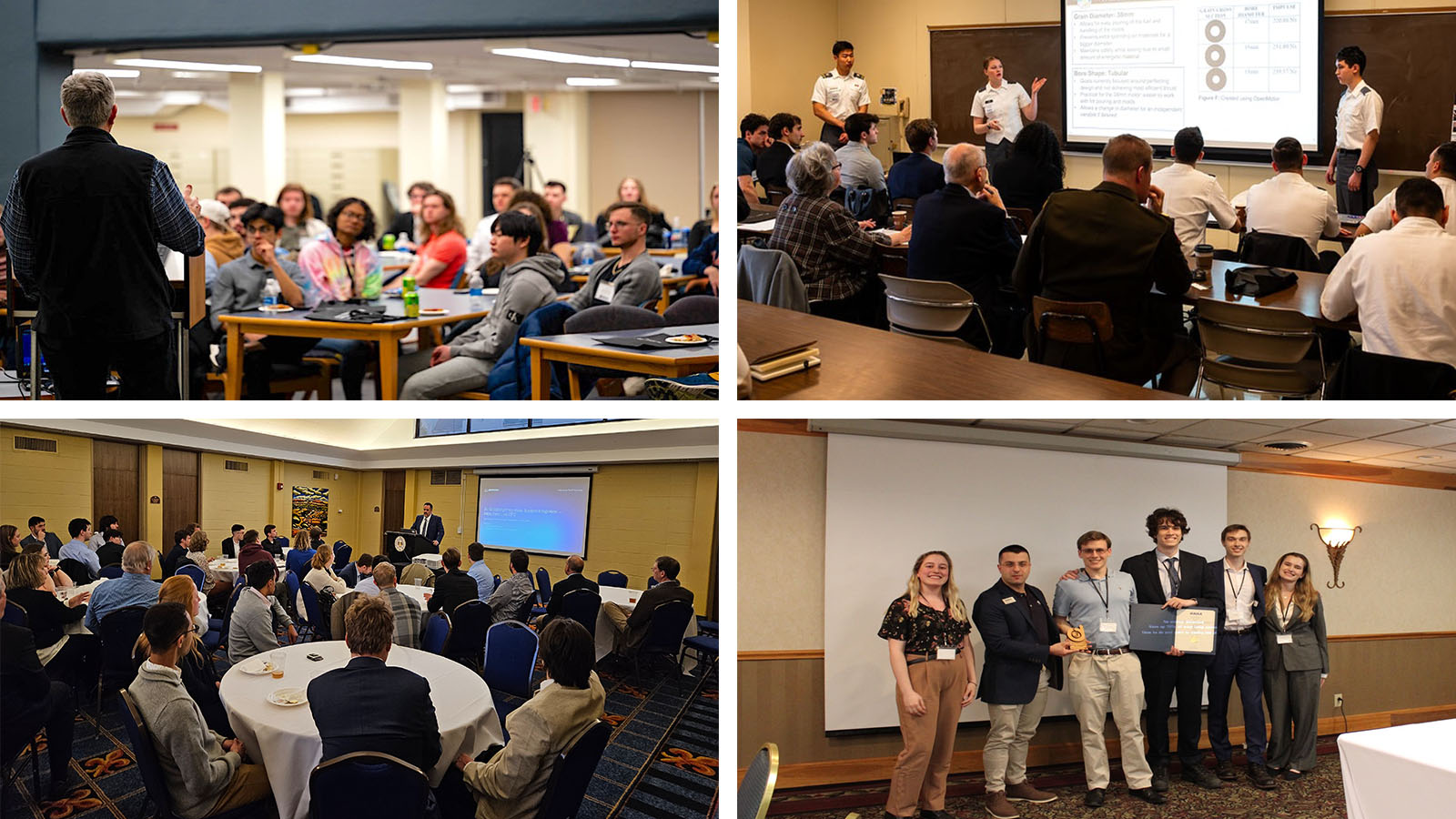
Making an Impact: AIAA Announces 2024 Regional Student Conference Winners
AIAA is pleased to announce the winners of six of the 2024 Regional Student Conferences. Student conferences are a way for students to present their research in person and be judged on technical content and presentation skills by AIAA members working in the aerospace industry. Lockheed Martin was the generous sponsor of these conferences, in addition to many other regional-level sponsors.
More than 260 papers were presented by university and high school students across six regions, with over 900 students and professionals in attendance. Additionally, the papers presented at the regional student conferences will be published by AIAA and available on Aerospace Research Central (ARC) later this year.
The first-place university student winners in each undergraduate, graduate, and team categories (listed below) are invited to attend and present their papers at the AIAA International Student Conference held in conjunction with the 2025 AIAA SciTech Forum, 6-10 January, Orlando, Florida.
Region I Winners
Undergraduate Category
1st Place – “Wind Tunnel Testing of High Advance-Ratio Compound Helicopter Designs,” Howard Zheng, University of Maryland College Park (College Park, MD)
2nd Place – “Experimental Investigation of the Bell X-1’s Vertical Stabilizer Using Heated Flos to Replicate Supersonic Flight Conditions In A Subsonic Wind Tunnel,” Annemarie Bernardi and Craig Merrett, Clarkson University (Potsdam, NY)
3rd Place – “The Evaluation of Various Controller Architectures for an Air Brake on a High-Powered Model Rocket,” Sophie Jack, University of Maryland College Park (College Park, MD)
Team Category
1st Place – “Design and Feasibility of a Polar-Orbiting Gravimetry CubeSat,” Liam Piper, Ellie Sherman, Jackson Neu, and Ethan Prigge, Worcester Polytechnic Institute (Worcester, MA)
2nd Place – “2024: A DEEP Space Odyssey,” Aubrey Monk, Felix May, Thomas Pfaffe, Josh Profeta, Jaylean Ureña, Rida Awais, Eli Jenkinson, and Javid Bayandor, University at Buffalo (Buffalo, NY)
3rd Place – “CubeSat Test Platform for an Ultra-Lightweight Carbon Fiber Radiation System for High Performance Nuclear Electric Power and Propulsion Systems,” Liam Piper, Nathaniel Polus, Benjamin Peters, and Paige Rust, Worcester Polytechnic Institute (Worcester, MA)
Region II Winners
Undergraduate Category
1st Place – “Analytical and Computational Models of Rijke Tube Pressure Waveforms Using a Sigmoidal Temperature Distribution,” Emma Signor and Joseph Majdalani, Auburn University (Auburn, AL)
2nd Place – “Experimental Study of Rotor-Sand Ground Interactions Utilizing Scaled NASA Dragonfly Model,” Darrell Nieves Lugo, Mario Vegnali, and Michael Kinzel, University of Central Florida (Orlando, FL)
3rd Place – “Implementation of Alternative Pressure-Sensitive Paint for Future Ground Testing,” Meghan Smitherman, University of Tennessee Knoxville (Knoxville, TN)
Masters Category
1st Place – “Structural Health Monitoring for Launch Vehicle Reusability Using Fiber Bragg Grating Written Optical Fibers,” Thomas Colicci and Andrew Noonan, Vanderbilt University (Nashville, TN)
2nd Place – “Designing and Manufacturing University of South Carolina’s First CubeSat Prototype,” Shruti Jadhav and Patrick Bailey, University of South Carolina (Columbia, SC)
3rd Place – “Development of a Mechanical Stage Separation Mechanism for Two-Stage Sounding Rockets,” Griffin Jourda and Nishant Sood, Georgia Institute of Technology (Atlanta, GA)
Team Category
1st Place – “Lessons Learned from the Launch of a Student-Built Jet-A/Liquid Oxygen Rocket,” Rithvik Nagarajan, Ethan Heyns, Braden Anderson, Michael Krause, Callum MacDonald, Varun Natarajan, Anthony Otlowski ,and Tristan Terry, Georgia Institute of Technology (Atlanta, GA)
2nd Place – “Validation and Development of an Atmospheric Electroaerodynamic Propulsion System,” Gaige Sidaway, Britain Steele, Tyler Zeringue and Conner Evans, Mississippi State University (Starkville, MS)
3rd Place – “Liquid Bipropellant Rocket Design,” Matthew House, Sherie LaPrade, Niyati Shah, Shelton Waddell, Michael Cowles, Nate Deforest, and Rodrigo Graca, Florida Institute of Technology (Melbourne, FL)
Outstanding Branch Activity Category
1st Place – “Volunteer Spirit and Outreach Through AIAA,” University of Tennessee Knoxville (Knoxville, TN)
2nd Place – “GT-AIAA: Diverse Perspectives and Increased Engagement,” Georgia Institute of Technology (Atlanta, GA)
3rd Place – “Inspiring Young Aerospace Professionals—The USC AIAA Process to Educate, Engage, and Retain,” University of South Carolina (Columbia, SC)
Freshman/Sophomore Open Topic Category
1st Place – “Unlocking New Horizons: The Role of Kenya’s Broglio Space Center in the Commercial Space Era,” Kurt Gugelev-Shapiro, Georgia Institute of Technology (Atlanta, GA)
2nd Place – “Managing Safety Hazards In The Preliminary Design Phase of a Student-Lead Liquid Rocketry Program,” Michael Johns, University of Alabama Huntsville (Huntsville, AL)
3rd Place – “Applications of Bio-Inspired UAVs for Enhanced Aerial Capabilities,” Haitish Gandhi, Embry-Riddle Aeronautical University (Daytona Beach, FL)
Poster Session Category
1st Place – “Static Fire Test Stand for Jet Vanes Analysis,” Shalini Shailesh, Margaret Hwang, Catherine Gang, Alexander Swift, Ahmet Baturay Coksaygili, Kush Bandi, Owen Pollack, and Pritham Sathish, Georgia Institute of Technology (Atlanta, GA)
2nd Place – “Multiphysics Analysis of Carbon Composite Structural Batteries,” Atharva Gujrathi, Georgia Institute of Technology (Atlanta, GA)
3rd Place – “Design of a Launchable Remote-Controlled Rover and Protective Aeroshell,” Matthew Loewer, Colby Weeks, Lake Williams, Jackson Zazzaro, and Wout De Backer, University of South Carolina (Columbia, SC)
Region III Winners
Undergraduate Category
1st Place – “Evaluating Performance of Simple Gas-on-Liquid Injector Designs in a Small Bipropellant Rocket Engine,” Stephen Hyde and Victor Argueta, Alma College (Alma, MI)
2nd Place – “A Parallel Approach to Arbitrarily-High Antenna Pattern Visualizations,” Brady Phelps and Chad Mourning, Ohio University (Athens, OH)
3rd Place – “Using the Drag Equation and Euler’s Method in Python to Predict Model Rocket Flight Trajectories,” Kulvir Chavda and Heather Arnett, University of Illinois Urbana-Champaign (Champaign, IL)
Masters Category
1st Place – “Analysis of the Circular Restricted N-Body Problem (CRNBP) in the Sun-Venus System,” Annika Gilliam and Robert Bettinger, Air Force Institute of Technology (Dayton, OH)
2nd Place – “Optimizing Robotic Arm Capture of Tumbling Satellites with a Genetic Fuzzy System Approach,” Sathya Karthikeyan and Donghoon Kim, University of Cincinnati (Cincinnati, OH)
3rd Place – “Machine Learning Applications for Compression Strength After Low Velocity Impacted Carbon Fiber Composites,” Jason Mack and KT Tan, University of Akron (Akron, OH)
Team Category
1st Place – “Design of a Low Barrier to Entry Reusable Rocket Engine and Test Stand,” Seth Arkwright, Matthew DiPofi, Jackson Godsey, Joshua Slivka, and Nicole Zimmerli, University of Akron (Akron, OH)
2nd Place – “Design and Flight Vehicle Integration of a VaPak Liquid Engine Rocket,” Ana Clecia Alves Almeida, Reece Davis, and Jonathan Armbrust, University of Akron (Akron, OH)
3rd Place – “United States Military Academy Army Rocketry and Engineering Sciences Team: Project Endurance,” Ellery Doyna, Elizabeth Joo, Allen Schneider, Arnav Pai, Timothy Ormsby, Ella Davis, Benjamin Johnson, Matthew Dupuis, Chase Adams, Aiden Ford, Tavis Cahanding, Pavel Shilenko, Michelle Hon, James Ye, Jacob Lombardo, Maxx Simeon, Matthew Dupuis, Juan Herrera Vasquez, Jake Moffat, Thomas Dickerson, Reagan Eastlick, and MAJ Robert Perezalemany, United States Military Academy (West Point, NY)
Region IV Winners
Undergraduate Category
1st Place – “Comparison of Analytical and Experimental Propeller Performance for Small Unmanned Aircraft Applications,” Noah Greeson, Dawson Manning, and Kurt Rouser, Oklahoma State University (Stillwater, OK)
2nd Place – “Design of Aerospike Nozzles for Rotating Detonation Engines Using Computational Fluid Dynamics and Machine Learning Techniques,” Philip Wilson, Khushi Piparava, and Liwei Zhang, University of Texas Arlington (Arlington, TX)
3rd Place – “Static Calibration of Platinum-based Pressure Sensitive Paint,” Neil Sawant and Christopher Combs, University of Texas at San Antonio (San Antonio, TX)
Masters Category
1st Place – “Influence of Freestream Reynolds Number on Unsteady Reflected-Shock Boundary-Layer Interaction in Shock Tube Experiments,” Adam Bicak and Hiroshi Ozawa, University of Oklahoma (Norman, OK)
2nd Place – “Development of a Small-Scale, Modular Kerosene-Nitrous Oxide Liquid Rocket Ground Test Rig,” Cade Christison and Kurt Rouser, Oklahoma State University (Stillwater, OK)
3rd Place – “Convolutional Neural Network and Homogenization based Hybrid Approach for Lattice Structures,” Mohammed Abir Mahdi, Shafi Al Salman Romeo, and Wei Zhao, Oklahoma State University (Stillwater, OK)
Team Category
1st Place – “Design and Evaluation of a Thrust Reverser for Small Unmanned Aircraft Turbojets,” Dawson Manning, Peyton Stice, Austin Rouser, Logan Rock, Sam Hjelm, Brooks Benson, and Kurt Rouser, Oklahoma State University (Stillwater, OK)
2nd Place – “Applying Pose Estimation Techniques to Visualize Drone Trajectory in GPS-Denied Environments,” Dao Ton-Nu, Ryan Mok, Azeem Bhaiwala, Evan Sayer, Jose Rodriguez, and Adam Nokes, University of Texas at Austin (Austin, TX)
3rd Place – “Enhancing Altitude Control in Aerospace Systems,” Jackson Perrine, Alyssa Pina, Brian Davis, Daniel Bluedorn, Josh Berkman, Kaiden Kiracofe, Kelsey Sanchez, Jared Pulliam, Juancarlos Munoz, and Veronica Fujihara, New Mexico State University (Las Cruces, NM)
Region V Winners
Undergraduate Category
1st place – “Experimental Investigation of the Impact of Propeller Configuration, Motor Noise, and Sound Reflection on Sound Pressure Level,” Olivia Hilburn and Charles Wisniewski, United States Air Force Academy (Air Force Academy, CO)
2nd place – “Project The Belly: Long Range, Short Field, Unmanned Cargo Plane Design,” Robert Immekus, and Endrit Mehmetaj, Saint Louis University (St. Louis, MO)
3rd place – “Preliminary Investigation of a High-Speed Formation Flight Concept,” Joseph Oczkewicz and Samuel Stanton, United State Air Force Academy (Air Force Academy, CO)
Masters Category
1st place – “An Exploration of Supplemental Lift Device Integration and Applications in Multi-Rotor UAV’s,” Nehemiah Hofer and Mujahid Abdulrahim, University of Missouri Kansas City (Kansas City, MO)
2nd place – “Development of an Externally-Mounted VHF Antenna Array for a Long-Endurance Medium-Scale UAS,” Matthew Turner, Samuel Ross, and Emily Arnold, University of Kansas (Lawrence, KS)
Team Category
1st place – “Experimental Validation of CFD on Hypersonic Turbulent Boundary Layers,” Holtman Dunham, Alexander Kennedy, Sarah Treece, and Michael Semper, United States Air Force Academy (Air Force Academy, CO)
2nd place – “OpenUAS: An Open-Source Unmanned Aircraft Systems (UAS) Testbed Solution Under Cost Constraints,” Varad Kulkarni, Allison Howard, Sydney Turner, Mukul Kulkarni, Nisha Raj, Eric Rasmussen, Mehmet Sefer, Karanvir Singh, and Kristin Rozier, Iowa State University (Ames, IA)
3rd place – “Noise-Free Relative Attitude Determination System for Payload Extended from Satellite Body,” Aidan Luczkow, Tanner Brummond, Steven Liu, Mark Wilbourne, Kate Kosmicki, and Robert Marshall, University of Colorado Boulder (Boulder, CO)
Region VI Winners
Undergraduate Category
1st Place – “Apogee Altitude Control of Sounding Rockets with an Analytic Guidance Algorithm,” Kyle Woody and Conor Van Bibber, University California Berkeley (Berkeley, CA)
2nd Place – “Implementation of Rotating Test Stand for Supersonic Wind Tunnel,” Suren Sanai and Nandeesh Hiremath, California Polytechnic State University, San Luis Obispo (San Luis Obispo, CA)
3rd Place – “Characterization of an Adamantane Thruster by a Langmuir Probe,” Cameron Coen and Autumn Zaretsky, University of Southern California (Los Angeles, CA)
Masters Category
1st Place – “Performance Characteristics of a Low-Cost Self Contained Pressure Data Acquisition System,” Nathan Eller and Nandeesh Hiremath, California Polytechnic State University San Luis Obispo (San Luis Obispo, CA)
2nd Place – “Variable-Density Gyroid Infill for Increased Strength and Stiffness of 3D Printed Components,” Isaac Wegner and Matthew Campbell, Oregon State University (Corvallis, OR)
3rd Place – “Establishing a Class 3B Laser Particle Imaging Velocimetry System at the Cal Poly Water Tunnel and Verifying Results with a Class 4 Laser System,” Jensen Lam and Nandeesh Hiremath, California Polytechnic State University San Luis Obispo (San Luis Obispo, CA)
Team Category
1st Place – “Design of a Non-Flapping Seagull-Inspired Composite Morphing Drone,” Moise Brambila, Alex Rini, Jordan Eghdamzamiri, Hariet Yousefi, Joshua Herrera, Donovan Hanna, Caleb Black, Youssef Saad, Aramar Arias-Rodas, and Peter Bishay, California State University Northridge (Northridge, CA)
2nd Place – “Electrically-Actuated Jumping Exoskeleton For Lunar Locomotion,” Kaitlyn Kumar, Yvonne Li, Manas Shah, and Nicolas Gomez, University of Southern California (Los Angeles, CA)
3rd Place – “Design and Aerodynamic Performance of a Morphing Aileron,” Christina Azzi, Anushka Tahiliani, and Sarah Nguyen, University of Southern California (Los Angeles, CA)
High School Category
1st Place – “Eco-Adaptaive UAV for Sustainable Agriculture: Utilizing Deep Learning and Flora Thermography for Artificial Pollination,” Sahana Anamika, Sahithi Cherukuri, and Serena Gandhi, Santa Clara High School (Santa Clara, CA)
2nd Place – “Enhancing Microdrone State Estimation: A Multi-Sensor Fusion Approach for Improved State Estimation in GPS Denied Environments,” Yogya Mehrotra, Dougherty Valley High School (San Ramon, CA)
2nd Place – “Synthesis and Applications of Graphene Ink for Manufacturing in Space,” Nathan Kim, Hannah Rodda, and Melissa Kuebler, Calvary Chapel High School (Santa Ana, CA)
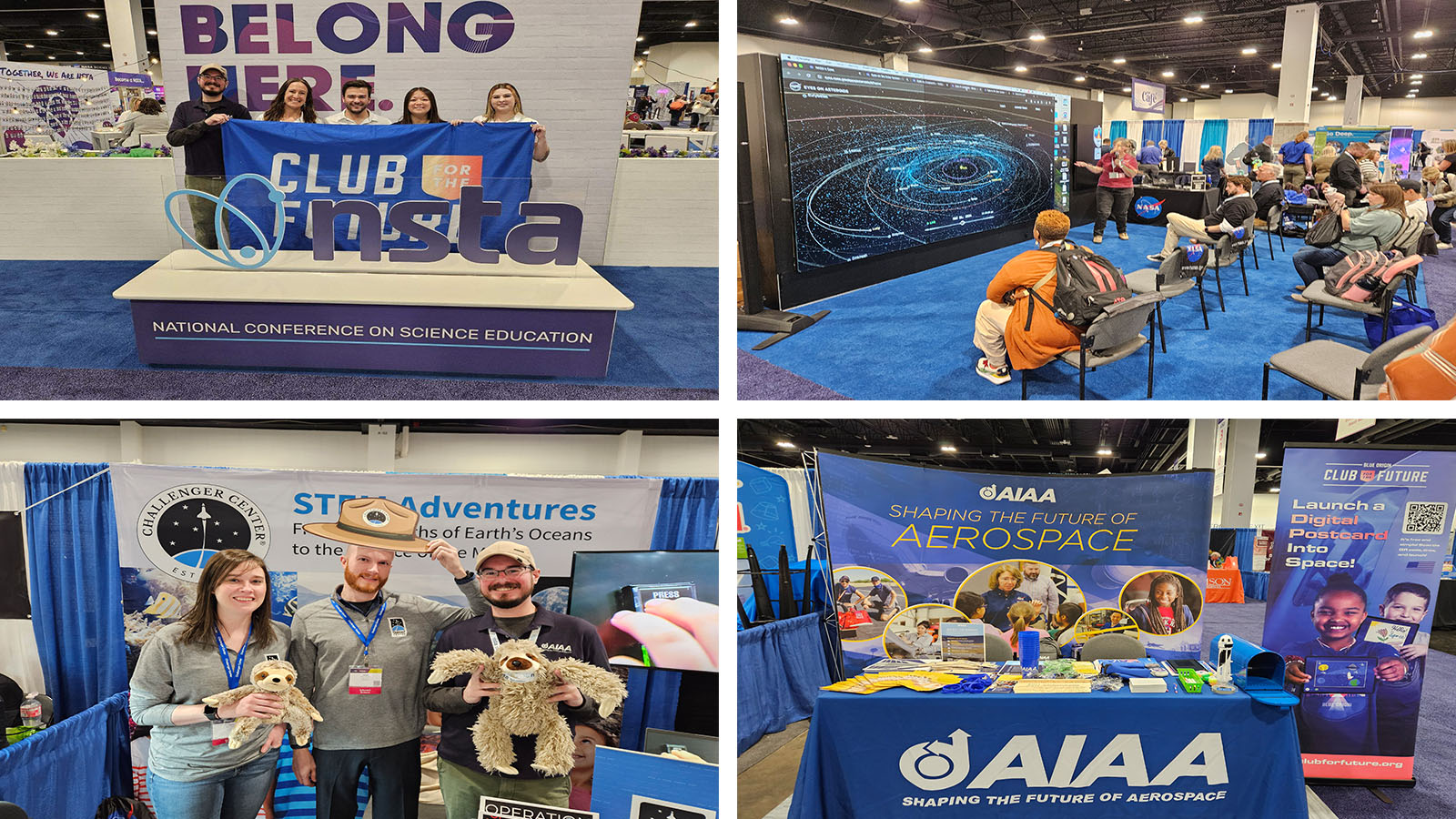
AIAA Connects with Educators at NSTA Conference
The National Science Teaching Association (NSTA), a community of 40,000 science educators committed to best practices in teaching science and its impact on student learning, held its National Conference in Denver, 20–23 March. During the conference, AIAA was able to meet with its partner, Blue Origin’s Club for the Future, to discuss our new scholarship for high school seniors: the Resilient Student Scholarship. We also met with Estes Education, another partner, to promote the free lessons and Title I school grants with the Exploration Generation initiative, and with Challenger Center whom we partner with on the Trailblazing STEM Educator Award. AIAA used its exhibit hall booth to spread the word about the numerous resources and benefits that come with our free membership for K-12 educators.
Call for 2024 SSTC Student Essay Contest Entries
Theme: Explore the profound effects of space observation on a particular industry of your choice. Investigate how advancements in satellite technology have revolutionized this industry’s practices, strategies, and overall impact. Consider the differences in data resolution (spatial, temporal, spectral) obtained on the ground, from an airplane or space. Discuss how space observation has either complemented or replaced the other observation methods of the chosen industry.
Who is eligible: 7th and 8th grade students
Deadline: 13 May 2024 (Submission to national contest). National winners and their teachers will be notified in June 2024.
QUESTIONS: Email Smrithi, Shane and Anthony Shao-Berkery ([email protected], [email protected], [email protected])
Complete information can be found on Engage under the Space Systems Library.

AIAA Associate Fellow Morrison Died in May 2023
Joseph H. Morrison, 61, died on 19 May 2023.
Morrison received a Bachelor and Master of Science in Aerospace Engineering from Virginia Polytechnic Institute and State University. He served his entire career at NASA Langley Research Center. His positions included founding manager of the Langley midrange supercomputer, co-developer of the NASA Standard for Modeling and Simulation, and associate director for Modeling and Simulation.
He also had a major influence on many international teams, which led to work on NATO-related projects. He worked on AIAA’s CFD Vision 2030 from 2018 to 2023.
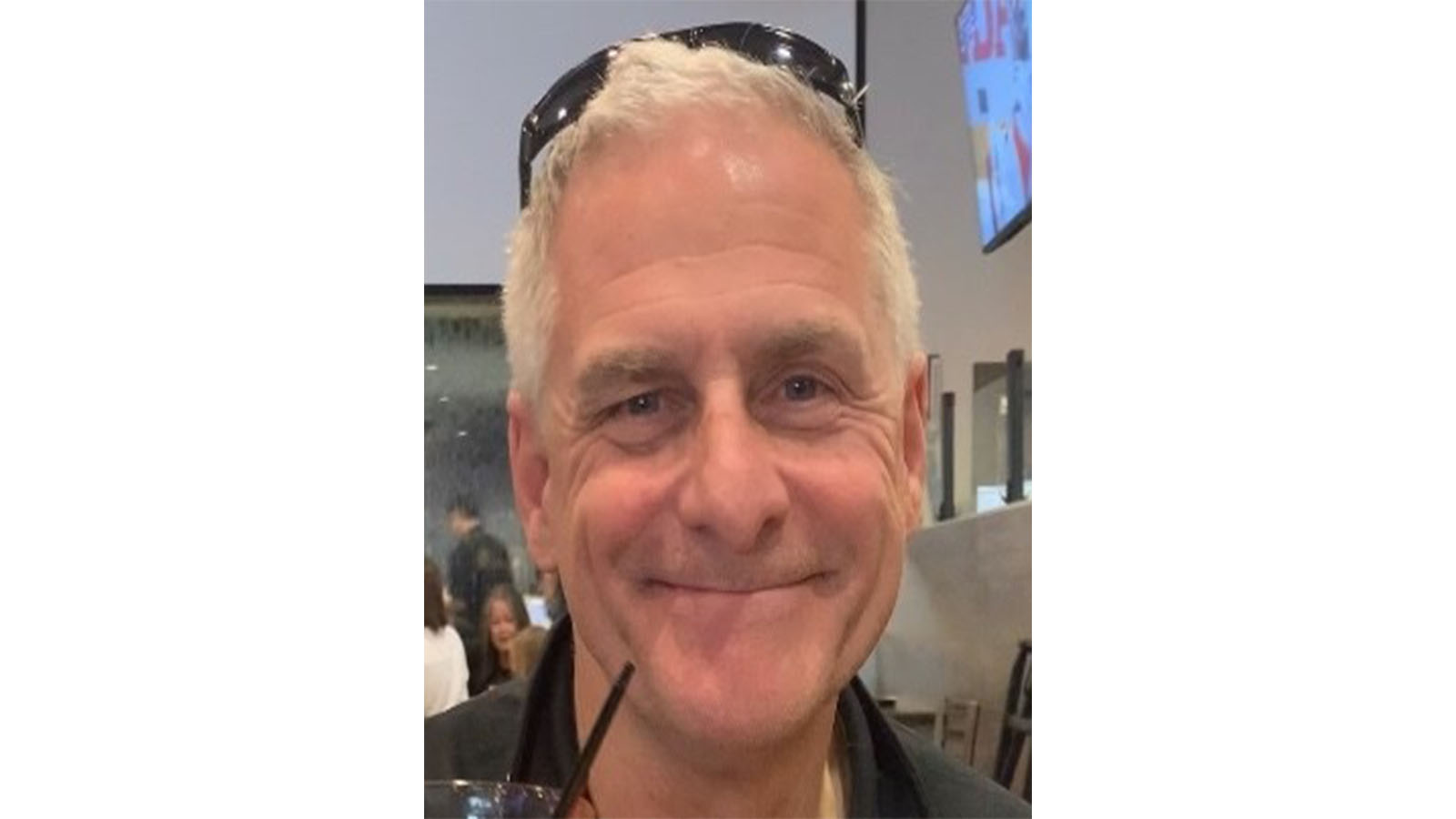
AIAA Senior Member Moore died in November 2023
William “Bill” Moore died on 7 November 2023. He was 64 years old.
Moore received a B.S. and M.S. in Aerospace Engineering from the University of Southern California in 1981 and 1983, respectively. He completed his Ph.D. in Aeronautics and Astronautics with a specialty in Guidance, Estimation, and Control from the Massachusetts Institute of Technology in 1986.
He started his career at TRW Electronics & Defense in 1980, as an engineer within the Trajectory Analysis Department. He joined Northrop Grumman’s Airborne Ground Surveillance and Battle Management Systems in 1992 and worked at several positions including deputy director of software engineering, director of systems engineering and chief engineer of radar technology insertion program, and chief engineer of the Joint STARS Program. He worked with Northrop Grumman Air Combat Systems as Chief Engineer, Naval UCAV Program, and Director, Advanced Systems Design Department from 2001 to 2003. Moore was with Northrop Grumman Aeronautics Systems from 2003 in various roles, including Director, Advanced Program & Technology; Director, Global Strike and Surveillance Programs, Advanced Programs Division; and Vice President of Engineering and Chief Engineer for the Sentinel program. On the Melbourne campus of Northrop Grumman, a building was named and dedicated in his honor on 29 February 2024. He was a 38-year member of AIAA.
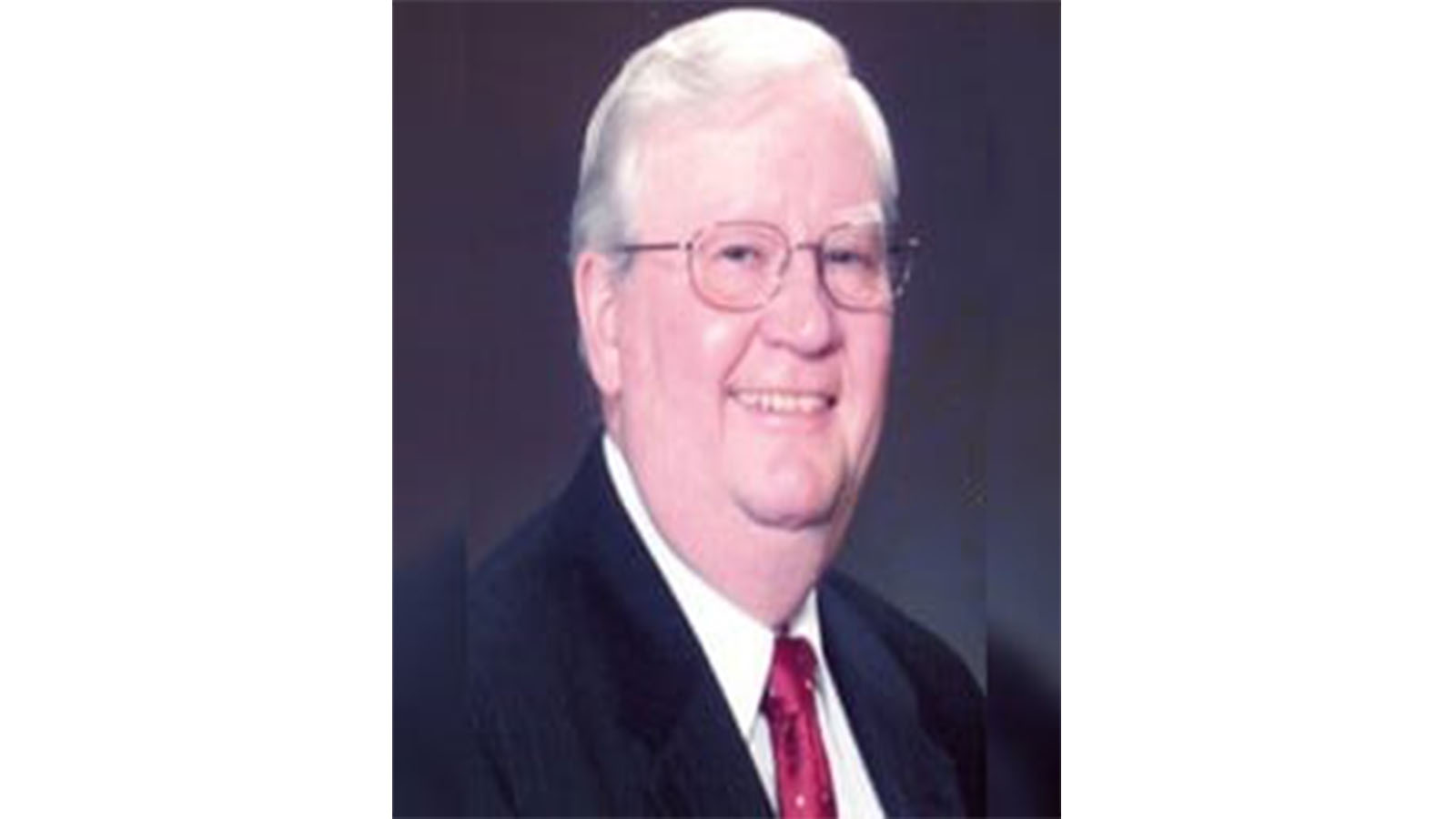
AIAA Associate Fellow Atkinson Died in November 2023
Dale B. Atkinson, 88, died on 19 November 2023.
Atkinson began his career as a U.S. Air Force Airman working as an aircraft mechanic primarily on the Boeing B-47 Bomber. Upon completion of his military service, he returned home where he graduated with a Bachelor of Science in Aeronautical Engineering from the University of Kansas.
He worked at the Air Force Flight Dynamics laboratory at Wright-Patterson Air Force Base, and an early assignment sent Atkinson and a team to Southeast Asia to determine why the Air Force was losing so many aircraft and pilots to enemy fire. Based on the results of the in-field surveys, the Air Force Combat Survivability Program was established, and Atkinson was appointed Chief of the newly established Survivability/Vulnerability Branch, where he directed the Air Force Survivability R&D Program and laboratory systems support efforts. He had an over 60-year career as a pioneer in the establishment of aircraft combat survivability as an aircraft design discipline, resulting in saving the lives of countless pilots and improving aircraft combat mission capabilities.
In 1973 Atkinson accepted a position at the Naval Weapons Center in China Lake, where he helped establish the Survivability and Lethality Division and was appointed the Associate Division Head. His support of the Naval Air Systems Command (NAVAIR) resulted in a move to Washington, DC, where he was appointed Head of the Combat Survivability Office.
His last DoD assignment was as the first Staff Specialist for Survivability and Battle Damage Repair (BDR) for Tactical Systems within the Office of the Under Secretary of Defense for Acquisition in the Pentagon. He was responsible for overseeing the survivability programs for tactical systems and providing a formal evaluation of the survivability of major weapons systems across all services. Atkinson retired from the Office of the Secretary of Defense in 1992.
Atkinson worked as a consultant for the Institute for Defense Analyses (IDA), the Survivability/Vulnerability Information Analysis Center (SURVIAC), and the Joint Aircraft Survivability Program (JASP) and served as an editor for the Aircraft Survivability Journal. His expertise has directly impacted multiple USAF, USN, and USMC aircraft including the A-10, F-15, F-18, V-22, F-35 and others. He was honored with many awards, including the NDIA Arthur Stein Award for outstanding contributions in Live Fire Test and Evaluation (LFT&E) and the AIAA Survivability Award. In addition, the NDIA Air Combat Survivability Lifetime Achievement Award and the Naval Air Weapons Station Live Fire Test Range were named in his honor. He volunteered on the AIAA Survivability Technical Committee for many years.

AIAA Associate Fellow Harris Died in January 2024
Charles E. “Charlie” Harris died on 29 January 2024. He was 73 years old.
Harris earned his bachelor’s degree in aerospace engineering, a master’s degree in engineering mechanics, and a Ph.D. in engineering science and mechanics all from Virginia Tech. In 2011 he was inducted into the Virginia Tech Academy of Engineering Excellence, which is the highest honor that can be bestowed.
Harris taught at Texas A&M University but was recruited by NASA Langley Research Center, where he spent the rest of his career, ultimately leading research operations for the entire center. NASA recognized Harris with an Exceptional Engineering Achievement Medal for his role in the Space Shuttle Return to Flight initiative, which uncovered the root cause of the 2003 Space Shuttle Columbia explosion – work that enabled the resumption of the Space Shuttle program. In 2007 President George W. Bush conferred on him the rank of distinguished executive in the Senior Executive Service for sustained and extraordinary accomplishment. Harris was involved with AIAA as a member of the Technical Activities Committee from 1999 to 2005.
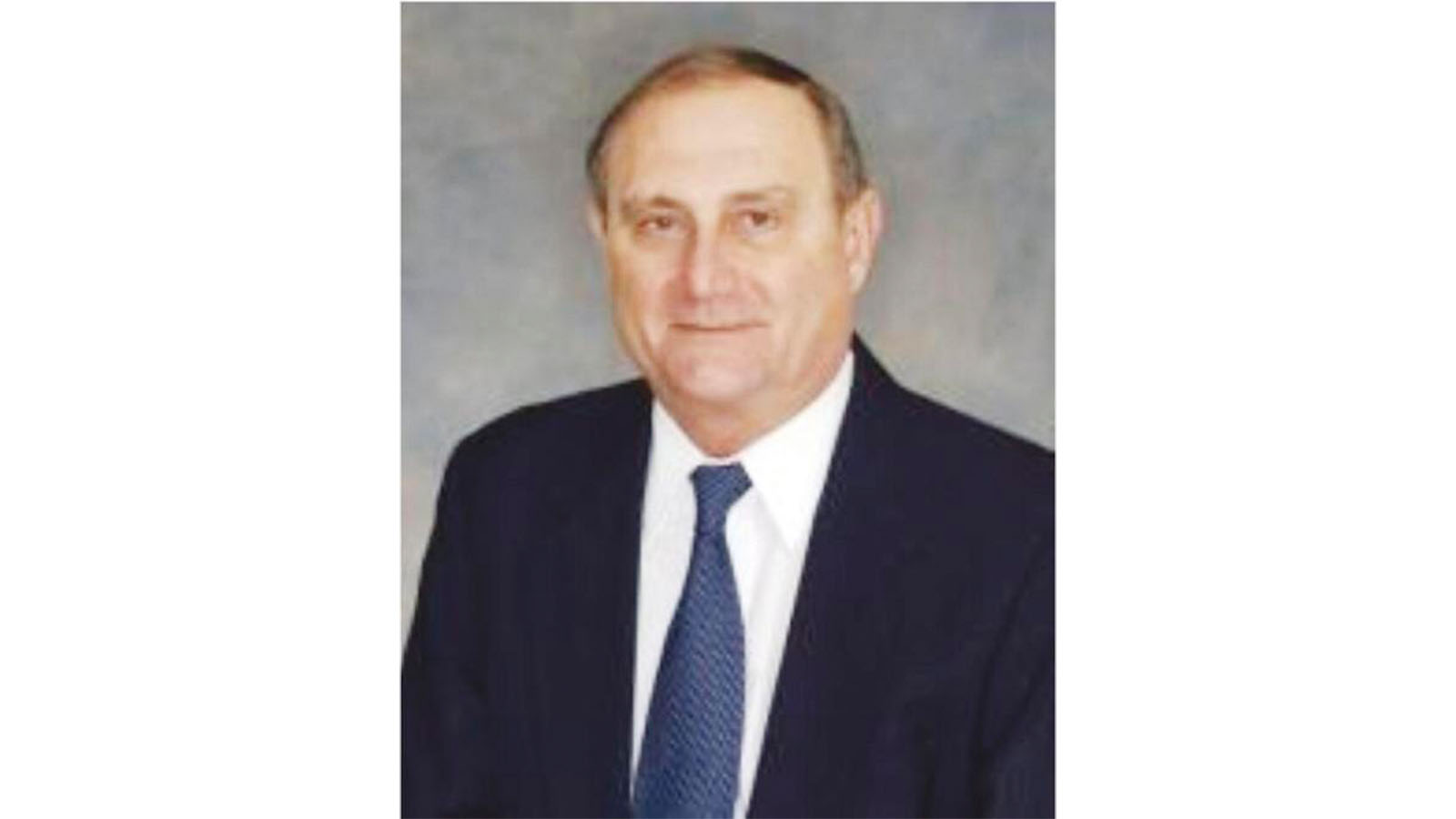
AIAA Fellow Schmidt Died in February 2024
George T. Schmidt, widely recognized for his Guidance, Navigation, and Control expertise, died on 22 February 2024.
Schmidt received his SB and SM degrees in Aeronautics and Astronautics and his ScD in Instrumentation from MIT. Beginning in 1961, he worked at the MIT Instrumentation Laboratory. He was proud to have been a member of the Apollo program landing men on the moon and safely bringing them back to earth, solving one of the most difficult navigation problems at that time. After the Instrumentation Lab was divested and became The Charles Stark Draper Laboratory in 1973, Schmidt then worked there for over 45 years.
He had a series of significant positions throughout his career as Division Leader, Director of the Guidance Technology Center, and Education Director. His final position before he retired in 2007 was as the Draper Director of Education. As part of the Draper team, Schmidt visited Russia shortly after the collapse of the Soviet Union, and he was instrumental in bringing them into the international guidance and navigation community. He was interested in working with the international navigation community and the benefits to be gained from navigation availability, such as GPS aided. He pursued this goal during many years on the board of the Institute of Electrical Engineers (IEEE).
Schmidt was a member of several U.S. government study teams, including the Defense Science Board Task Force on GPS. Since 1968, he participated in the Panels of the NATO Science and Technology Organization (formerly AGARD), including with several lecture series concerning inertial, GPS, and integrated navigation systems in denied and degraded environments. In 2005 he received the von Kármán Medal from the organization.
For many years Schmidt was also a Lecturer in Aeronautics and Astronautics at MIT, teaching estimation, control, and navigation. He authored or was a contributing author of more than 100 technical papers, reports, articles, and books, as well as being a speaker at international conferences. For 17 years, he was the editor-in-chief of the AIAA Journal of Guidance, Control, and Dynamics. He managed the journal during a period of unprecedented growth until he retired in 2013.
Schmidt was an IEEE Life Fellow and AIAA Fellow. He served as Vice President of Member Services and Vice President of Technical Operations for IEEE Aerospace and Electronic Systems Society (AESS). He was recognized in 2001 with the AIAA International Cooperation Award for sustained, original contributions in developing cooperative technical exchanges and educational activities in guidance, navigation & control between the U.S. and other nations.
Stay Up to Date
Submit your email address to receive the latest industry and Aerospace America news.




